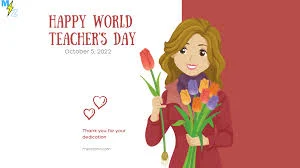Here are some of the prominent tribal figures who fought for their people and their motherland.
- [1] Birsa Munda. Birsa Munda was a tribal hero from Chotanagpur's tribal region. He was regarded as a freedom fighter, spiritual leader, and a folk hero even though he passed away at the young age of 25. He promoted the value of cultural roots and helped people realise the value of land and the rights they have in connection with it. Siddi narrated how Munda mobilised the tribal community against the British. And, subsequently, various sects of tribal communities kept their sustained and ferocious attacks on the British. Munda died at the age of 25 but he had brought about seminal changes in the lives of tribal people across the nation.
- [2] Alluri Seetha Ram Raju. Alluri was apprehended and executed in the Rampa or Manya rebellion in 1924, in which anti-government resistance led to Guerilla warfare. He fought for the rights of the tribal communities and was martyred on May 7, 1924, at the young age of 27.
- [3] Rani Gaidhinliu.Gaidinliu Pamei (26 January 1915 – 17 February 1993) popularly known as Rani Gaidinliu was a
Naga spiritual and political leader who led a revolt against British rule in India. At the age of 13, she joined the Heraka religious movement of her cousin Haipou Jadonang. - [4] Siddhu Murmu and Kanhu MurmuOn 30 June 1855, two
Santal rebel leaders, Sidhu Murmu and Kanhu Murmu (related as brother) along with Chand and Bairab, mobilized about 10,000 Santals and declared a rebellion against British colonists. The Santals initially gained some success but soon the British found out a new way to tackle these rebels. - .[5] Tilka Majhi.One such instance of an Adivasi rebellion against the British was that of Tilka Manjhi in 1785. Determined to defend his people and land, Tilka organized the Adivasis into an army trained in the use of bows and arrows. For years, they would be at war with the Europeans and their army.
- [ 6] Govind Guru.Govindgiri, also known as Govind Guru, (1858–1931) was a social and religious reformer in the early 1900s in the adivasi-dominated border areas of present-day Rajasthan and Gujarat states in India. He is seen as having popularized the Bhagat movement, which was first started in the 18th century.
- [6] Tirot SinghHe is hailed for his warfare tactics, valour, and uncompromised control over the Khasi region against the British occupation. The treaty of Yandabo, which was signed nearly two years after the Anglo-Burmese war, had finally paved the way for the British to enter the Brahmaputra Valley.
- [7] Tantya BhilTantya Bhil was one of the greatest revolutionaries who waged an armed struggle against the British rule for twelve years and endeared himself to the masses by virtue of his indomitable courage and passion to uproot the foreign rule.
- The most commonly known tribes of India are Gonds, Bhils (or Bheels), Santhal, Munda, Khasi, Garo, Angami, Bhutia, Chenchu, Kodaba, and the Great Andamanese Tribes.














